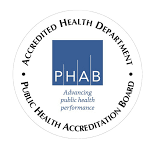- Home
- Data, Statistics & Registries
- Promoting Interoperability (PI) Program
- Electronic Lab Reporting
- On-Boarding Process
Electronic Lab Reporting On-Boarding Process
Click the steps below for more information.
- Step 1: Registration/On-boarding
- Step 2: In Queue
- Step 3: Staging/Validation
- Step 4: Production
- Step 1: Registration/On-boarding
Facility will notify ADH of interest in submitting Electronic Lab Reporting data.
Complete the registration process through https://arcs.adh.arkansas.gov/ (ARCS- Arkansas Reporting and Communication System)
EMR/EHR vendor to generate an Error Free NIST report to evaluate ELR test messages.
- Validate HL7 message using the National Institute of Standards and Technology (NIST) ELR HL7 V2.5.1 Validation tools https://hl7v2-elr-testing.nist.gov/mu-elr/. Address any errors identified by the validation tool.
Select a data transport mechanism for the ongoing submission of Electronic Lab Reporting data. ADH supports the following transport options:
- Virtual Private Network (VPN). A VPN creates a secure channel of communication (i.e. a "tunnel") over a public network, such as the Internet. Security is provided through authentication, which ensures that the connecting entity is authorized. Encryption is used to protect the data during transit.
- Secure File Transport Protocol (SFTP). SFTP is a network protocol designed to offer encrypted file management, encrypted file transfer, and encrypted file access functionality over a secure channel.
- Public Health Information Network Messaging System (PHINMS). PHIN MS is the public health standard for reporting to the Centers for Disease Control and Prevention (CDC) and is a standard for national laboratories reporting to states. The software is freely available from the CDC.
- Health Information Exchange and Arkansas State Health Alliance for Records Exchange (SHARE). The Arkansas HIE is implemented, which allows health care professionals to appropriately access and securely share a patient’s medical information electronically.
Note:
ADH requires the user to upload a validation report from NIST in order to place the provider/facility in a holding queue.Email is not a secure mechanism of data transfer. Do not submit test messages containing personally identifiable health information through email. ADH reviews the messages and ensures they meet the standards specified for Arkansas, HL7 and Interoperability (where applicable).
- Step 2: In Queue
Facilities that have successfully submitted qualifying test messages are placed into the queue. ADH Program Coordinators will notify eligible providers in order of registration.
To improve timeliness, provide ADH with Electronic Lab Reporting validation reports and test messages as early as possible in the process.
Once the Facility reaches the front of the queue, they are notified by an ADH Program Coordinator when it is time to proceed to Step 3: Validation.
- Step 3: Staging/Validation
Once a data transport mechanism has been selected, facilities should transmit a test message via the web service. Facilities will begin ongoing submission and participate in validation activities with the Program Coordinator in the Staging Environment.
- Step 4: Production
Facility reports via Electronic Lab Reporting data and participates in periodic quality assurance activities.
Continue ongoing submission of Electronic Lab Reporting data to public health.
If the community identifies a need to follow up on data that indicates an event of potential public health concern, it will contact data providers.
or
If ADH identifies a need to follow up on data that indicates an event of potential public health concern, it will contact data providers.
Eligible hospitals and professionals are required to participate in periodic quality assurance checks to ensure accuracy of reporting. ADH Program Coordinators will contact data providers to schedule these activities.
Questions? Contact Electronic Lab Reporting Registry at ADH.ARCS@arkansas.gov.


